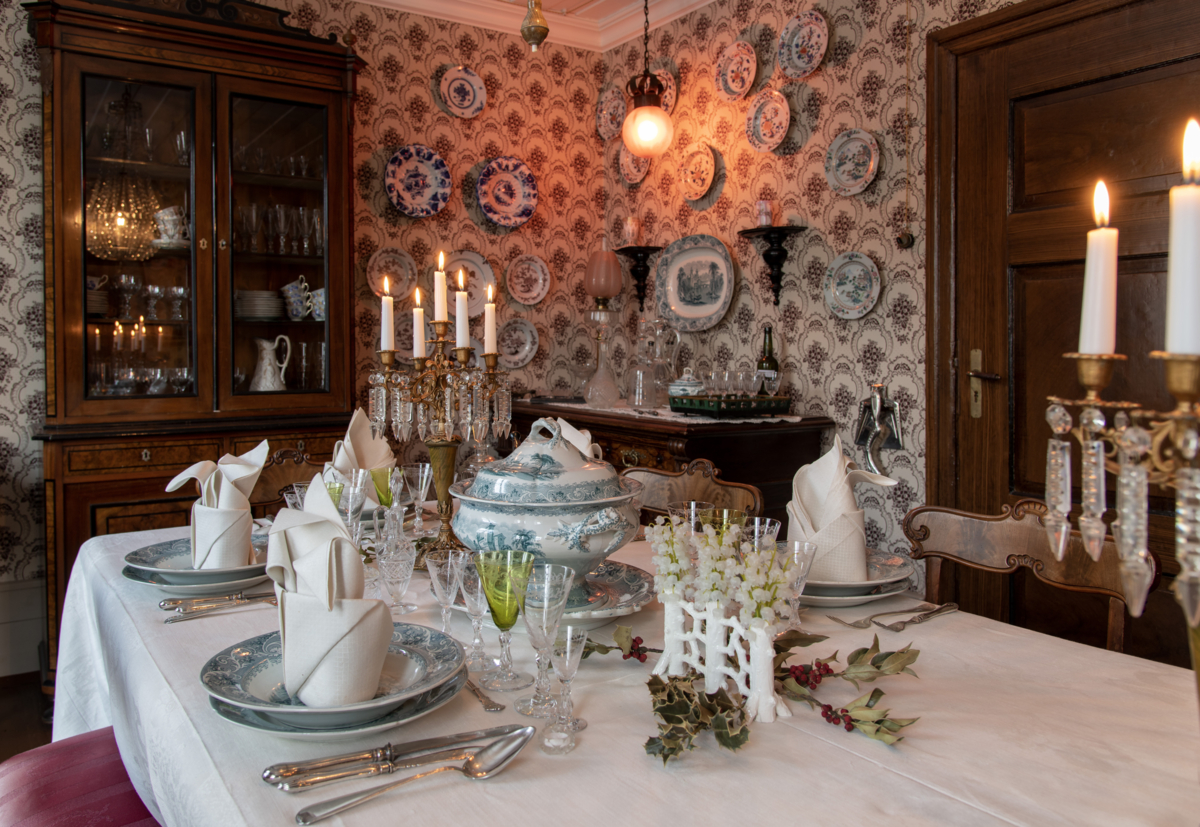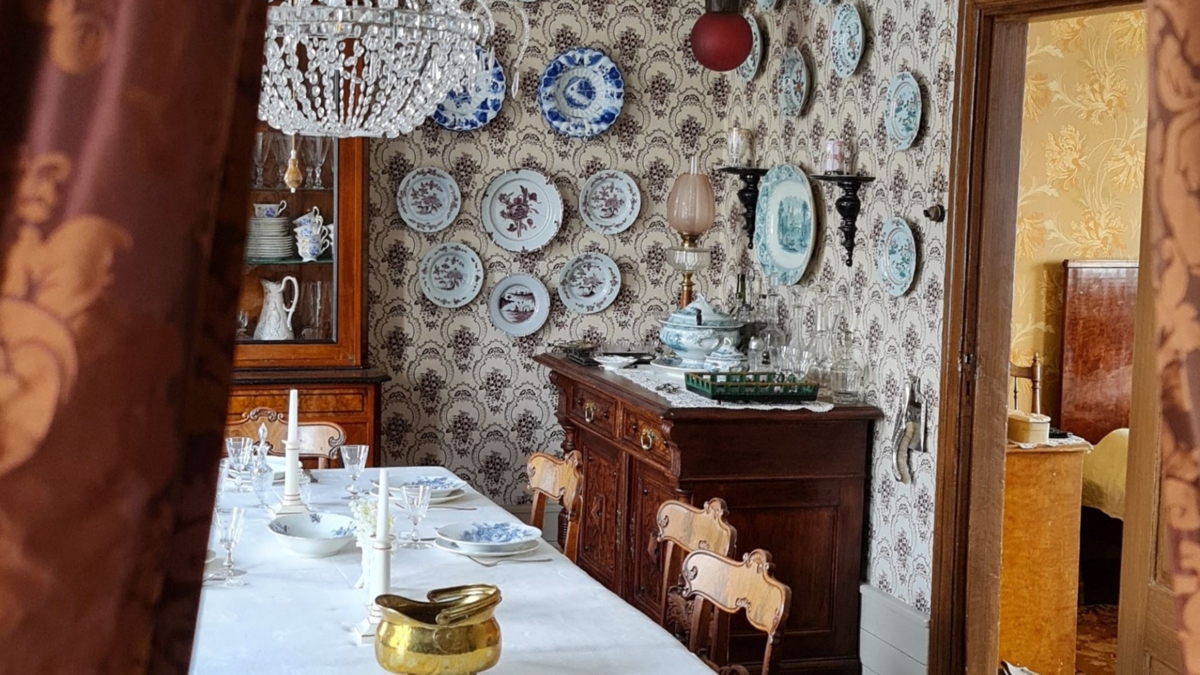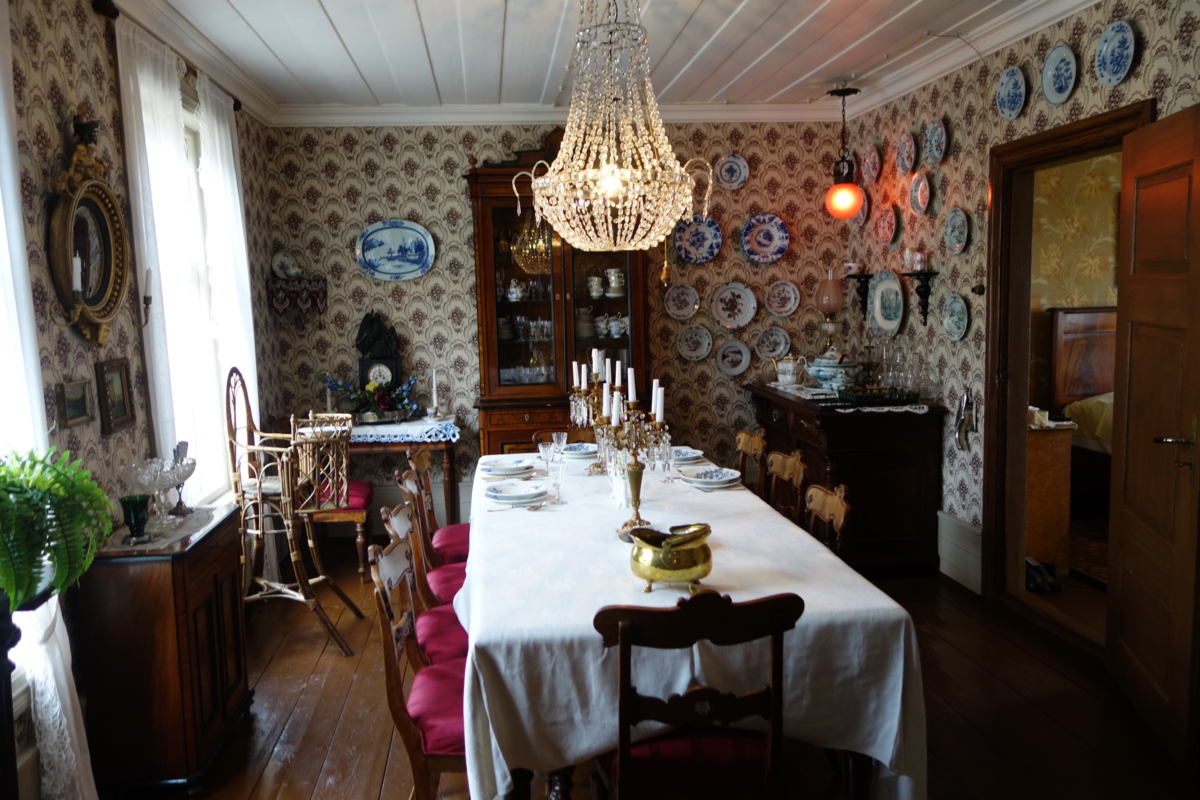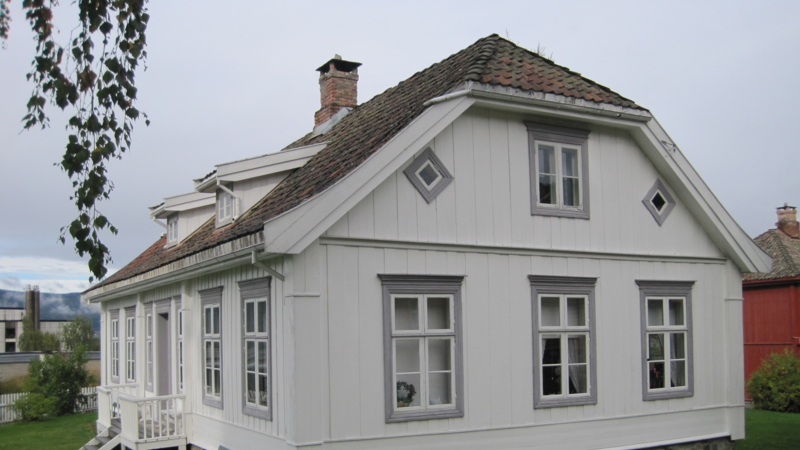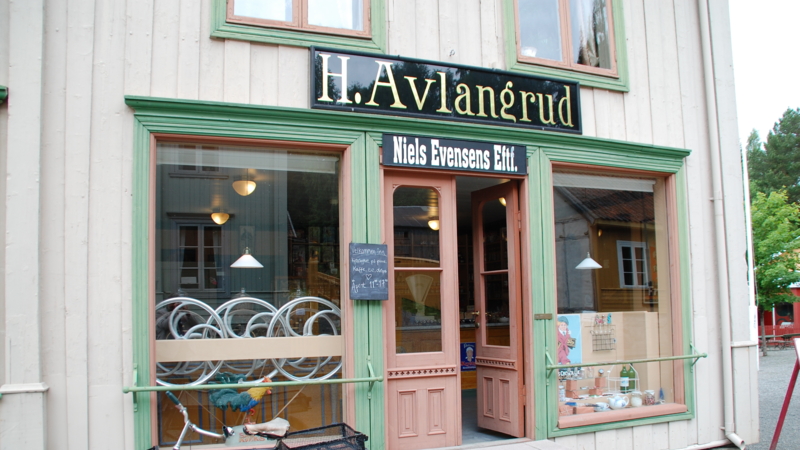
Photo: Tone iren Eggen Tømte/Maihaugen
The pharmacist's apartment
Explore the apothecary’s bourgeois home from the 1890s at Maihaugen – History, interiors, and lifestyle
The apothecary was a key member of the city’s upper bourgeoisie. Like many others, he lived in the city center, in an apartment above the pharmacy. This was home not only to his family but also to his apprentices. At Maihaugen, you can experience an authentic bourgeois home from the 1890s, a time of rapid urban development. Goods arrived by steamboat on Lake Mjøsa, but the railway from 1894 made transportation from Kristiania even faster.
The most representative rooms, such as the salon, smoking room, and dining room, faced the street, while the bedroom, kitchen, and maid’s room were located toward the backyard. These rooms were equipped with call buttons to summon the servants. The interior featured thick, dark silk curtains, heavy furniture, and a blend of modern and traditional lighting. Electricity was newly introduced, but unreliable, so chandeliers still used candles.
In the 1890s, the city’s apothecary was Thorvald Grundtvig. His wife, Margrethe, managed the household and was active in both the sanitary association and the women’s suffrage movement. She was awarded the King's Medal of Merit for her work establishing the Rheumatism Hospital in the city, and a street has been named after her.

